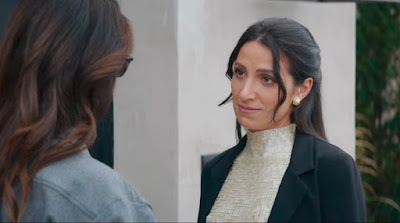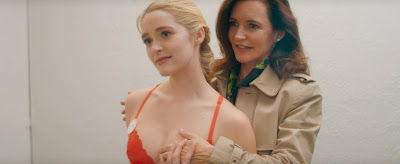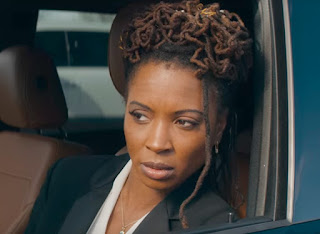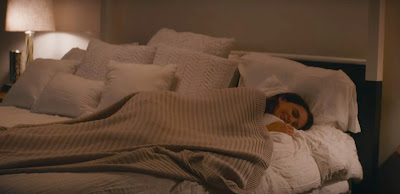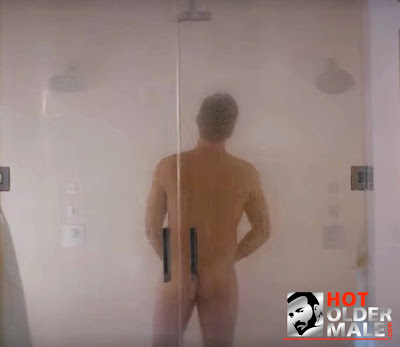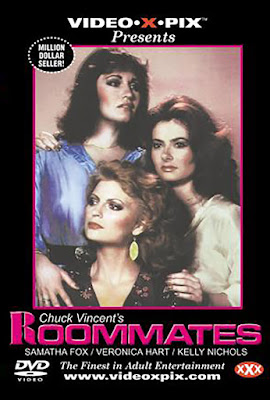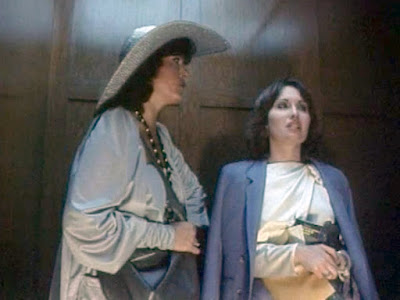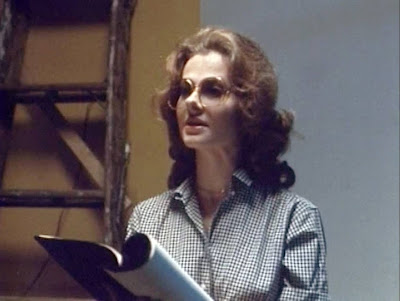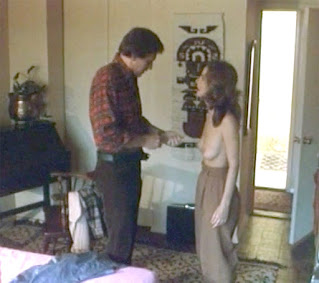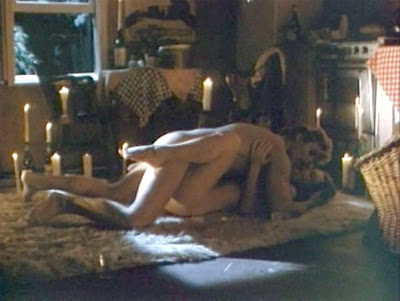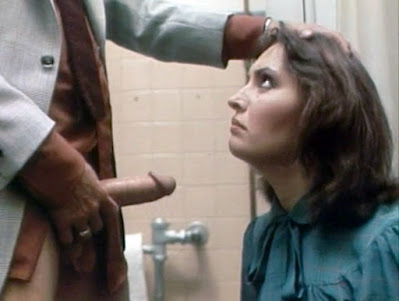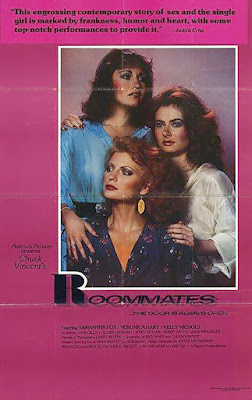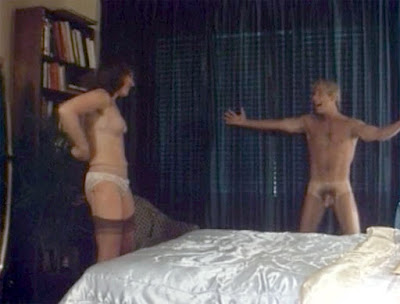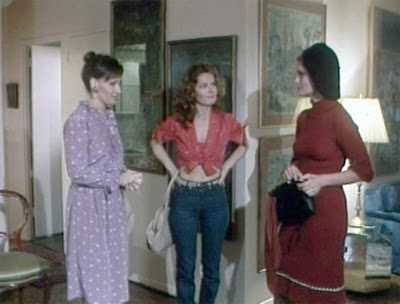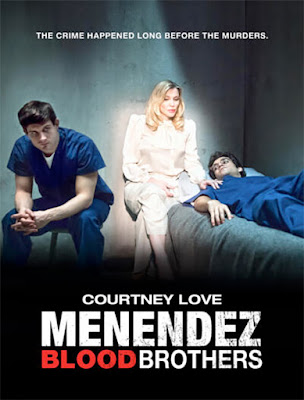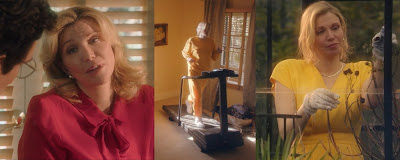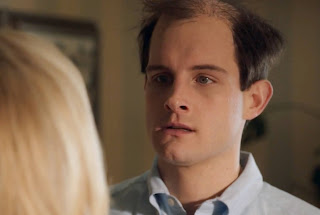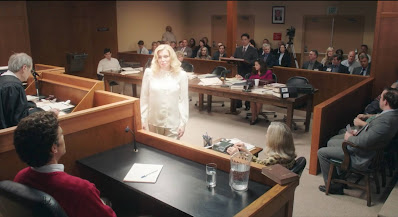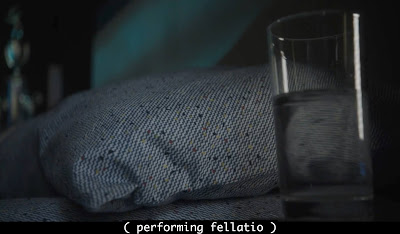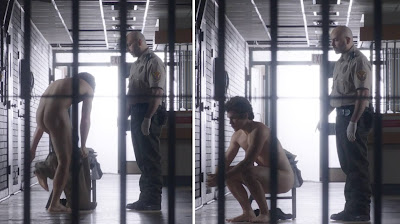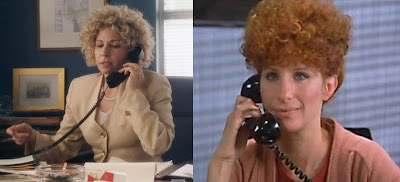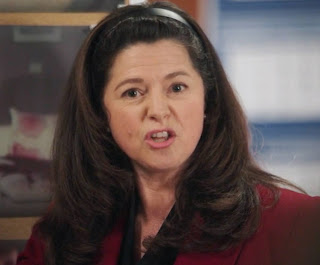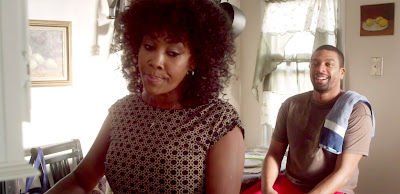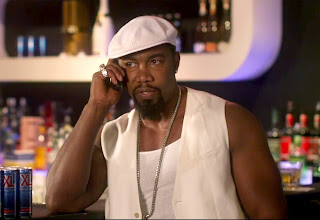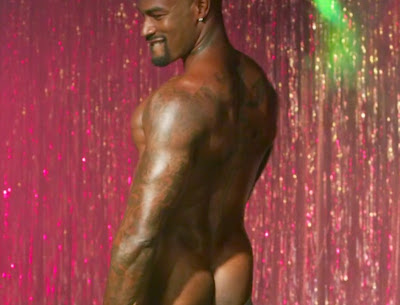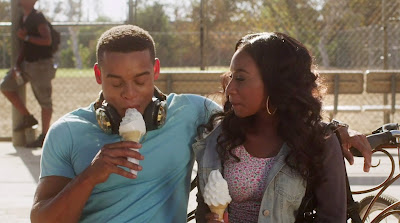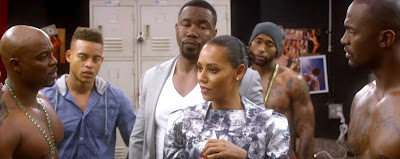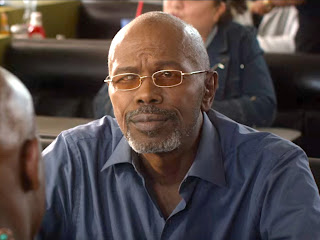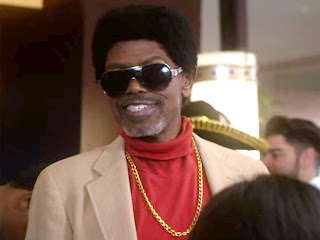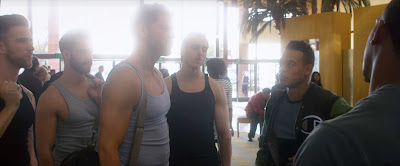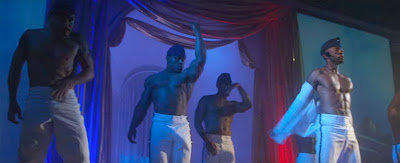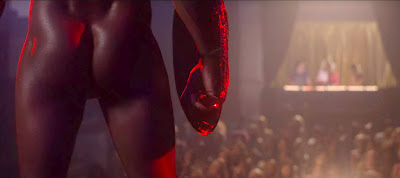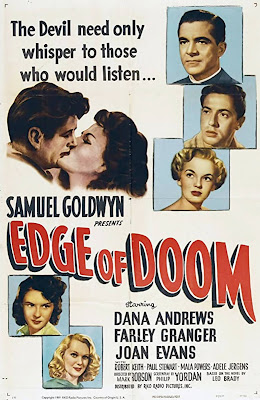 |
| Edge of Doom’s less-than-captivating poster is probably not the sole reason the movie failed at the box office, but I’m sure it didn’t help. |
“I find it impossible to serve these people,” complains a priest at the opening of the noirish 1950 drama EDGE OF DOOM.
“Poor people are difficult to serve, George,” reminds Father Roth (Dana Andrews), the senior priest of Los Angeles’ St. Stephens’ Church.
Yes, ministry would be so much easier if it weren’t for all these fucking poors, who jeopardize their dead-end jobs by carrying illegal weapons and who refuse to call the police on their abusive husbands (that the church insists they remain wedded to). But, as long as they keep those tithes coming, the priests might as well try to save their wretched souls.
But Father Roth
isn’t that cynical. Sometimes it’s the poors who bring the priests closer to
God. He tells of one former parishioner who, after the church denied his alcoholic father a
Christian burial because he committed suicide, was determined to keep his tithe money and wretched soul to himself.
Flashing back to
what appears to be the previous week, we meet Martin Lynn (Farley Granger),
working as a delivery driver for a flower shop, barely making enough to scrape
by, let alone pay for his ailing mother’s medical care — or, at the very least,
move her out to Arizona, which is healthier, somehow. And marrying his
girlfriend Julie (Marla Powers) is out of the question, which, in 1950, means Martin is also suffering from a serious case of blue balls on top of crushing poverty. He asks his boss, Mr.
Swanson (Houseley Stevenson) for a raise, reminding the old man he was promised
one the previous year and, besides, Martin’s worked at the shop for four years.
Mr. Swanson kicks the can down the road, telling Martin that the shop has had a lot of
expenses and can’t afford any pay increases. Martin is then assured that he’ll always have a job as long as Mr.
Swanson is alive. Translation: Be grateful you have a job. Now shut the fuck up.
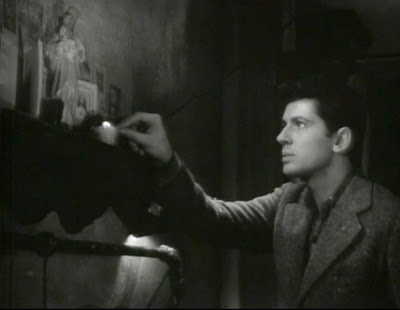 |
| Like a prayer. |
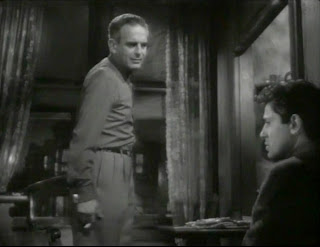 |
| “Who’s your daddy?” |
Martin’s mother is still very devout, much to her son’s chagrin (“You’ve prayed enough, Mother.”) Her prayers don’t spare her the inevitable, however, leaving Martin is saddled with the expense of burying her. His skeevy neighbor, Mr. Craig (Paul Stewart), rants about how “it’s a rich world, but it hates to give.” Someone, somewhere, owes Martin money, Mr. Craig continues; all he has to do is have the nerve to collect. Martin takes the older man’s words to heart. His mother deserves a big funeral, and St. Stephens is going to pay for it.
The late Mrs. Lynn was usually counseled by St. Stephens’ beloved junior priest Father Roth, but it’s the grumpy Father Kirkman (Harold Vermilyea)—the same priest who refused Martin’s father a church funeral—who is available when Martin shows up at the rectory. We know the church isn’t going to pay for shit, no matter who Martin asks, but at least Father Roth would be more diplomatic in rejecting Martin’s demands. Father Kirkman’s first response, upon hearing that Martin’s mother has died, is to chastise the young man for not calling him sooner to administer her last rites (priorities). Furthermore, he can’t understand why Martin wants his mother to have such a lavish funeral (“Your mother was a simple woman.”)
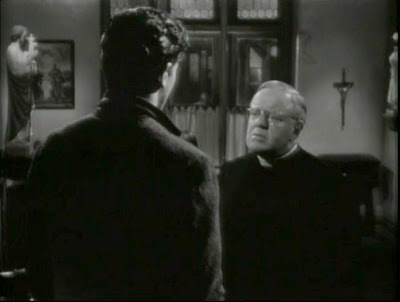 |
| Martin confronts Father Don’t-Give-a-Shit |
Father Kirkman isn’t a total bastard, though, giving Martin cab fare to the funeral home. Martin, in turn, smashes Father Kirkman’s skull with a brass crucifix, killing him instantly. Oops.
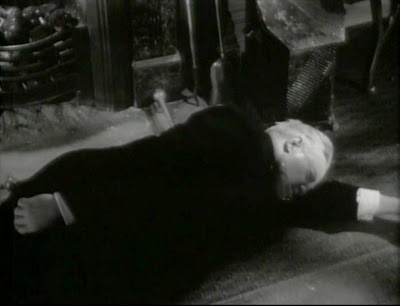 |
| Most tragic of all, no one said Father Kirkman’s last rites. |
Martin barely avoids discovery by Father Roth and Father Kirkman’s misbehaving niece Rita (Joan Evans, who gets third billing even though she’s barely in the film), only to have police cars come speeding up beside him as he’s walking down the street. The cops aren’t coming for Martin but, rather, responding to a robbery — committed by Mr. Craig — at the nearby Galaxy Theatre. A mob of onlookers swarm the theater (Los Angelenos just loved gawking at robbery victims back in the day, apparently), practically carrying Martin to this other crime scene. A panicked Martin fights his way through the crowd, running to a nearby greasy spoon where he is the sole customer.
Martin’s been seen fleeing the Galaxy, which leads to two detectives flanking him in the diner and treating Martin like he’s been Driving While Black, though they keep their guns holstered (#WhitePrivilege). The cops ultimately take Martin to the station, suspecting him of committing the Galaxy Theatre robbery. He’s questioned by Det. Lt. Mandel (Robert Keith), who’s just as pleasant as the arresting officers. Martin not only fails to convince Det. Lt. Asshole that he’s innocent of the Galaxy hold-up, but he also inadvertently gets himself added to a list of potential suspects in Father Kirkman’s murder as well.
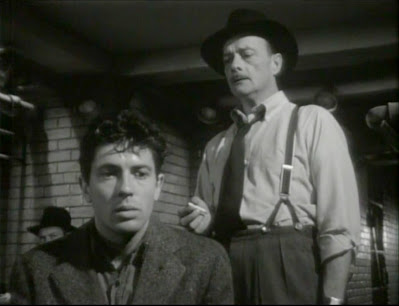 |
| Martin is questioned by Det. Lt. Asshole. |
Father Roth happens to stop by the station to vouch for one of his parishioners (“Lock him up for a week. Throw a good scare into him.”) Roth is a little more compassionate when he learns Martin is also in jail. “Martin is not a thief,” the priest tells Mandel, “and he wouldn’t go robbing theaters on the night his mother died.” (Hold on to your wallet on any other night, though!) Mandel releases Martin, but he stresses to Roth that it’s against his better judgment: “He bothers me.”
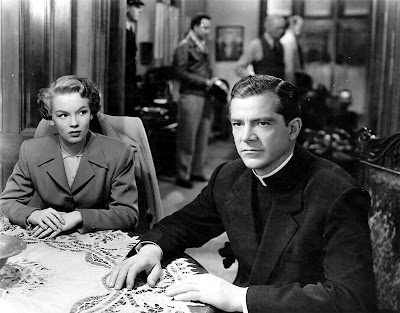 |
| “Frankly, I’m glad the old bastard’s dead.” |
Things continue to worsen for Martin. He loses his job, and the mortuary won’t extend him any credit (“Obviously, Mr. Lynn, you can’t afford your desires.”) He’s again picked up by the cops, this time as a suspect in the crime he actually committed. In an uncharacteristic bit of luck, the eyewitness who saw him leaving the rectory doesn’t pick him out of a lineup, instead identifying Mr. Craig as the man she saw.
It looks like Martin is going to get away with murder. Alas, you can take
the boy out of the Catholic church, but you can’t take the Catholic church out
of the boy. (Maybe I should re-phrase that...)
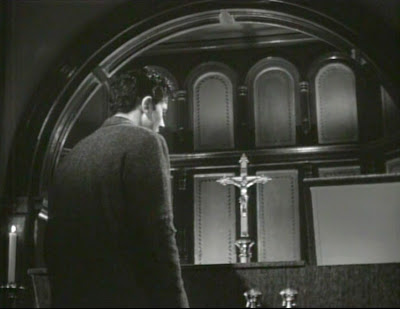 |
| “Goddammit.” |
More Secular than Faith-Based
Edge of Doom is based on a novel by Leo Brady, who, though a devout Roman Catholic, didn’t shy away from criticizing the church, and while liberties were taken with the film adaption (the prologue and epilogue scenes, as well as some narration, were added to give the story a more inspirational spin), it’s far from Catholic propaganda. Part of the reason so many current faith-based movies fail as films, aside from the fact that they are uniformly terrible, is they have no nuance, with all their stories boiling down to “secularism (and non-Christian religions) bad; evangelical Christianity good.” Faith isn’t examined, it’s presented. Edge of Doom’s approach is far more palatable. Religion is a part of the story, but it’s not THE story.
Edge of Doom is more secular than faith-based — you’ll hear more about Catholic church protocols than the Lord — and ultimately, it’s Martin’s story that makes the movie compelling viewing. Martin’s mother finds comfort in the church, the promise of a rewarding afterlife validating her mortal struggles. For Martin, the church is just one more institution that’s let him down. What he wants is a way out of the misery of poverty, not justifications for why he should suffer through it.
Farley Granger made
Edge of Doom between starring in the film noir classics They Live by
Night (1948) and Alfred Hitchcock’s Strangers on a Train (1951), and
while Doom isn’t as good as either of those movies, it’s still worth
seeking out (it’s streaming on Prime as of this writing). Though the inspirational bits are hokey, and several supporting
characters are a bit too stock (Mr. Craig, Mr. Swanson, Mandel), Granger, who, I’m obligated as a gay man to inform readers came out as bi in his 2007 memoirs Include Me Out, keeps
Martin — and the movie — grounded in reality, resulting in a movie that’s just as relatable today as
when it was first released.
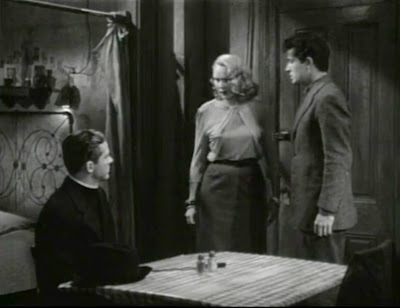 |
| Irene (Adele Jergens) crashes a scene to calm
audiences worried Edge of Doom was becoming a total sausage fest. |


